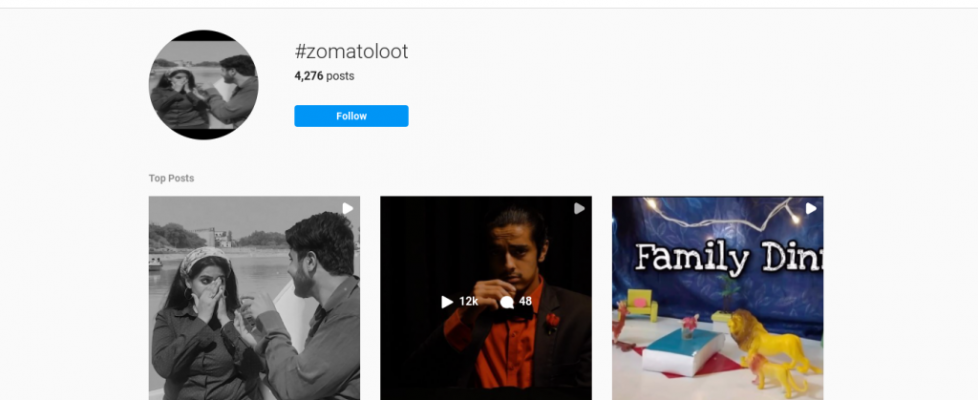Smart work vs Hustle culture: Is UGC a slacking device for brands and an unpaid brief to aspirational creatives?
‘Never have a bad meal’ is the kind of optimism Zomato, India’s largest food delivery service app indulges in. It is currently on its A game, dealing with online criticism in a constructive (and more so profitable) way. The kind of online criticism that conceived a User Generated Content Contest in 2020, that I personally have had a lasting impression of. Zomato prompted it’s users to create a one minute advertisement and post it on Instagram with the hashtag #zomatoloot in exchange to gain an opportunity or a possible chance to win 25 lakh rupees (24,575 pounds) for this production.
I think user generated content (UGC) can be categorized as digital gold of the 21st century. If a brand has tapped into it successfully, there is a whole lot of abundance for them in terms of creativity, ideas, collaborations and opportunities. Zomato was praised for their out of the box ad crowdsourcing idea that lowered their time and production costs and generated more than 4.02k entries on Instagram. This got them free publicity on mainstream media channels, along with deep engagement and participation from it’s customers who turned into producers and flag bearers of the service.
Zomato and Instagram undoubtedly extracted the most benefits out of this contest, while Zomato gained a great hype and media exposure, Instagram as an advertising platform got its users motivated to be more proactive on the social media application. They would have explored and used various features such as hashtags, tagging and location tagging to get maximum visibility, in addition to revisiting the social media platform time and again in lieu of results.
The limitation with this kind of marketing strategy is the imbalance of power it creates between the consumers (now prosumers) and the platform/s (Zomato and Instagram here). While there is an economy of abundance of surplus value created for the platforms through creative labour, it coexists with the lack of compensation for the participants itself. Since only a few people could be rewarded for their time, energy and creative investment. Few meaning three out of the four thousand participants. It benefited the consumers in a very superficial and limited way (so as to encourage ideas and states of flow).
This process of commodification, an apparently ‘natural’ result of the internet of things, in my opinion, has been normalised through two dominant practices backing up the ideological hegemony of the digital economy: first, the trend of lean startups and outsourcing everything possible which has paved the path for the platforms to make monopolies out of their businesses. I remember reading this book by Timothy Ferris, ‘the four hour work week’ that had an explicitly derogatory tone towards outsourcing labour from the so called ‘developing countries’, he mentions India and a famous startup from where you can hire personal assistants for almost no price. I remember feeling so uncomfortable reading that chapter, and especially the way he would ask his P.A’s to do the work of apologising to his wife. This and a stream of other books of the same genre, suggest similar ideas with an undertone of racial discrimination and blatant ignorance. Second, is the idea of glamorising the hustle culture on a creative level, just like the gig economy as she explains. This promotes delayed gratification and helps in normalising free creative labour ironically, since the brands are capitalising on this work.
This idea places the guilt of not winning or excelling in the hands of the individual, and portrays failure as something bad. It is similar to something that I have witnessed all my life, the idea of competing for education in India (for a placement in a college) and a failure to do so means you’re not good enough or you are failing at life. This overlooks the basic fact that we are the 2nd most populous country in the world with limited seats in colleges (say 20/ 30). This ideology creates stress and further social problems of teen suicides and unhealthy social and educational environments.
So to draw upon this case study, I would say Zomato is definitely doing smart work even in other areas of its functioning. It relies heavily upon other forms of user generated content such as user reviews, menus and other information contributed by its users. They have gamified this process by providing discounts and rewards to them in exchange for this formation of this collective intelligence, which in my opinion is a fair trade only on the surface level (through the digital optimism lens) but when you take the lens of a media scholar, you can put a finger or two on all the deeply entrenched problems that perpetuate as a result of this practice.

